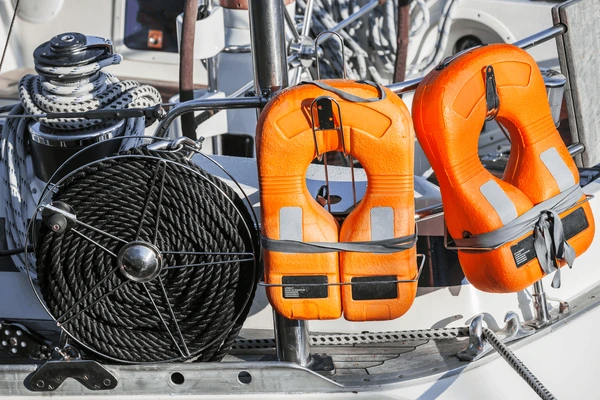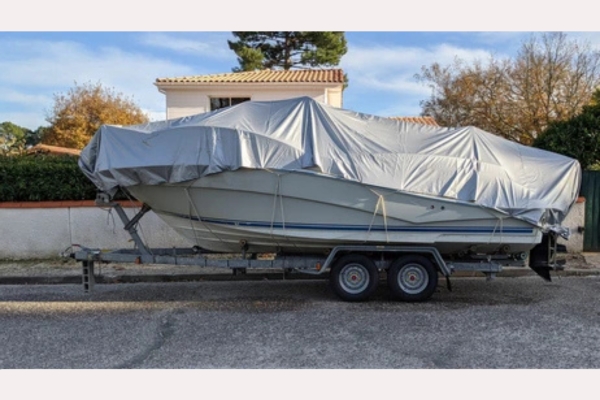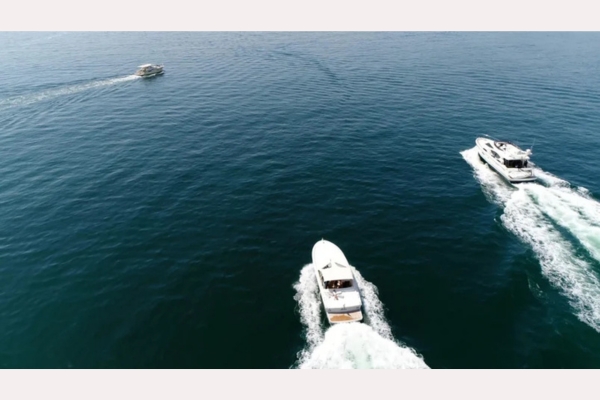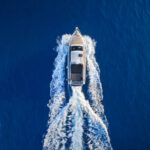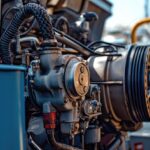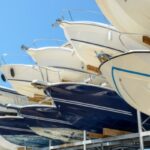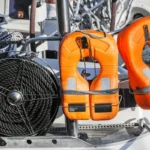Safety on the water is non-negotiable for every boater. Whether you’re an experienced sailor or a first-time enthusiast, having the right safety equipment onboard is essential for protecting yourself, your passengers, and others on the water. This guide outlines the 10 must-have safety items every boater should carry, ensuring compliance with regulations and preparedness for emergencies.
Life Jackets: Your Primary Safety Essential
A life jacket is arguably the most important piece of safety equipment on any boat. Not only is it legally required in most jurisdictions, but it also saves lives during emergencies. Every passenger, regardless of swimming ability, should have a properly fitting life jacket readily accessible. Modern life jackets come in various designs to ensure comfort without compromising safety.
Make sure you choose life jackets approved by the U.S. Coast Guard or your local regulatory body. Inspect them regularly for wear and tear, and replace them as needed. Remember, having enough life jackets for everyone onboard is a minimum requirement—consider carrying extras for unexpected guests.
Checklist for Life Jackets:
- One life jacket per passenger.
- Ensure proper fit for all ages and sizes.
- U.S. Coast Guard-approved models.
- Regularly inspect for damage or wear.
Fire Extinguisher: Combat Onboard Fires
Fire extinguishers are critical for quickly addressing onboard fires, especially in enclosed areas like the engine compartment or galley. Boats with fuel systems, cooking appliances, or electrical components are at risk of fire, making extinguishers a must-have.
Ensure your fire extinguisher is appropriate for marine use and regularly check its expiration date. Familiarize yourself and your passengers with its location and operation. A well-maintained fire extinguisher can mean the difference between a minor mishap and a catastrophic event.
Checklist for Fire Extinguishers:
- U.S. Coast Guard-approved extinguisher.
- Mounted in an easily accessible location.
- Check pressure gauge and expiration regularly.
- Provide training for passengers on proper use.
First-Aid Kit: Be Prepared for Medical Emergencies
A well-stocked first-aid kit is essential for handling minor injuries or stabilizing someone until professional help arrives. Your kit should include bandages, antiseptics, pain relievers, scissors, tweezers, and any personal medications your passengers may need.
Boating accidents can happen in remote areas where medical assistance isn’t immediately available. Having the right supplies on hand ensures you can address cuts, burns, or other injuries effectively.
Checklist for First-Aid Kits:
- Include basic medical supplies and medications.
- Store in a waterproof container.
- Regularly replenish used or expired items.
- Ensure everyone knows its location.
Visual Distress Signals: Signal for Help
Visual distress signals, such as flares and signal flags, are essential for attracting attention in emergencies. These items are often required by law, especially for boats operating in coastal or open waters. They’re invaluable when visibility is low or you’re far from shore.
Different types of visual signals serve specific purposes. Handheld flares, for example, are effective at night, while signal flags can be used during the day. Always ensure your distress signals are within their expiration dates and stored in a safe, dry location.
Checklist for Visual Distress Signals:
- Carry both daytime and nighttime signals.
- Store in a waterproof, easily accessible location.
- Regularly check expiration dates.
- Familiarize passengers with usage.
Sound-Producing Devices: Be Heard in Emergencies
A sound-producing device, such as a horn or whistle, is vital for signaling other vessels and alerting rescuers to your presence. These devices are particularly useful in foggy or low-visibility conditions where visual signals may not be effective.
Ensure your sound device meets the regulatory requirements for your vessel’s size and type. Many modern boats come equipped with built-in horns, but having a backup handheld whistle is a smart precaution.
Checklist for Sound Devices:
- Install a built-in horn if not already equipped.
- Carry a handheld whistle as a backup.
- Test the functionality before each trip.
- Use as prescribed by navigation rules.
Navigation Lights: Stay Visible
Navigation lights are crucial for ensuring your boat is visible to others, especially at night or during poor weather conditions. These lights also communicate your vessel’s direction and activity to nearby boats, helping to prevent collisions.
Inspect your navigation lights regularly to confirm they’re functioning correctly. Carry spare bulbs or batteries as part of your standard gear to ensure you’re never caught in the dark without visibility.
Checklist for Navigation Lights:
- Test all lights before departure.
- Carry spare bulbs or batteries.
- Use in accordance with maritime rules.
- Clean lenses regularly for optimal brightness.
Emergency Locator Beacon: A Lifesaving Device
Emergency Position Indicating Radio Beacons (EPIRBs) and Personal Locator Beacons (PLBs) transmit your location to rescue services in case of an emergency. These devices are invaluable for boaters venturing into open waters where cell phone signals are unreliable.
Investing in a beacon could save your life during a worst-case scenario. Ensure it’s properly registered and know how to activate it. Keeping it within easy reach can make all the difference during critical moments.
Checklist for Emergency Locator Beacons:
- Register the device with relevant authorities.
- Test periodically as recommended.
- Store in an accessible location.
- Educate passengers on its usage.
Throwable Flotation Device: Rapid Response to Overboard Incidents
A throwable flotation device, such as a life ring or cushion, allows you to quickly assist someone who has fallen overboard. These devices are simple to use and provide immediate buoyancy to help a person stay afloat until they can be rescued.
Keep your throwable device in an easily accessible location and ensure it’s tethered to the boat for easy retrieval. Regularly inspect it for damage or wear, and replace it if necessary.
Checklist for Throwable Devices:
- Choose a U.S. Coast Guard-approved device.
- Store in a visible, easily accessible spot.
- Attach a retrieval line for easy recovery.
- Inspect for damage periodically.
Anchor and Line: Keep Your Position Secure
An anchor and line are essential for stabilizing your boat in emergencies or when stopping to fish or rest. The right anchor depends on your boat size and the type of seabed you’ll encounter.
Practice proper anchoring techniques to ensure your boat remains secure. Using an anchor also prevents unintentional drifting, which can pose safety risks in busy or hazardous areas.
Checklist for Anchoring Gear:
- Select an anchor suited to your boat and water conditions.
- Carry an appropriate length of line or chain.
- Store in a designated compartment.
- Practice proper anchoring techniques.
Bilge Pump: Keep Water Out
A bilge pump is essential for removing water that enters your boat, whether from rain, waves, or leaks. An effective bilge pump can prevent your vessel from becoming unstable or sinking in extreme cases.
Test your bilge pump regularly to ensure it’s in working order. For added peace of mind, carry a manual pump as a backup. Regular maintenance of your bilge system can save you from significant trouble on the water.
Checklist for Bilge Pumps:
- Test the pump before each trip.
- Carry a manual pump as a backup.
- Clean the bilge area regularly.
- Inspect for clogs or damage.
Conclusion
Having the right safety equipment onboard is essential for any boating adventure. By equipping your vessel with these 10 must-have items, you’ll be prepared to handle emergencies and comply with maritime regulations. Prioritize safety, and you’ll enjoy a more confident and enjoyable time on the water.
Seeking for Top-Quality Boats and Expert Advice?
For those seeking top-quality boats and expert advice, consider partnering with Fly Yachts. Located in Fort Lauderdale, Florida, Fly Yachts offers an exceptional selection of boats tailored to your needs.
Fly Yachts
www.flyyachts.com
Contact Number: 954-633-4878
130 SE 29th Street, Fort Lauderdale, Florida 33301


